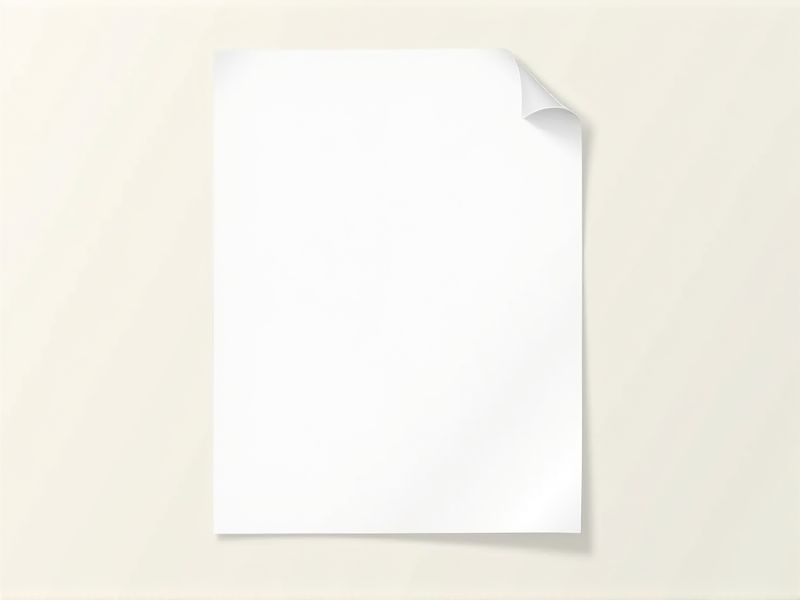
The standard dimensions for a sheet of paper, known as "Letter size" in the United States, are 8.5 by 11 inches (about 216 by 279 millimeters). This size is commonly used for everyday printing, office documents, and schoolwork. In contrast, many countries use the "A4" standard, which measures 210 by 297 millimeters (about 8.27 by 11.69 inches). Knowing these dimensions can be helpful when selecting paper for printers, submitting documents, or working on design projects that require specific paper sizes.
Iso 216
The ISO 216 standard specifies the dimensions of paper sizes, predominantly the A and B series commonly used worldwide. For instance, the A4 size measures 210 mm by 297 mm, making it highly prevalent for documents and letterhead. The standard ensures consistency in paper products, facilitating seamless printing and documentation across various industries. Understanding ISO 216 can significantly improve your efficiency when selecting and using paper for business or personal projects.
A Series
The A Series, particularly A4, is the most widely used paper size globally, measuring 210 x 297 millimeters (8.27 x 11.69 inches). Each subsequent size in the A series, such as A5 and A6, halves the paper area of the previous size, ensuring consistent aspect ratios at 1:2. This standard is governed by ISO 216, which provides a unified sizing system for various applications, from printing to packaging. By adhering to the A Series standard, you ensure compatibility and efficiency in both commercial and personal formatting tasks.
B Series
The B Series paper sizes, defined by ISO 216, offer a range of dimensions ideal for various printing needs. For instance, B4 measures 250 x 353 mm, while B5 is 176 x 250 mm, providing flexibility for both large documents and compact booklets. The B Series is particularly favored for envelopes, posters, and magazines due to its unique aspect ratio, which allows for easier folding and trimming. When choosing B Series paper, consider how these dimensions can optimize your project's presentation and functionality.
C Series
The C Series paper sizes, including C0 to C90, follow the ISO 216 standard, primarily used for envelopes and other packaging designs. C0 measures 917 x 1297 millimeters, while C1 is half that size at 648 x 917 millimeters. Each subsequent dimension is halved, making C2 458 x 648 millimeters, down to C90, which measures just 32 x 45 millimeters. This series is particularly favored in the printing and design industries for its convenience in creating offsets and compatibility with A Series paper sizes.
A4 Size
The A4 size sheet of paper measures 210 millimeters in width and 297 millimeters in height, making it a popular choice for various printing needs. This standard size is widely used in offices, schools, and for personal use, accommodating documents, reports, and letters. The A4 paper's aspect ratio of 1:2 allows for easy resizing to other dimensions in the A series. You may find that A4 is suitable for your printing, as it fits comfortably in most printers and filing systems.
Legal Size
The legal size sheet of paper measures 8.5 inches by 14 inches, making it ideal for legal documents and contracts that require extra length. This size is commonly used in law offices and government agencies to accommodate a variety of forms and official paperwork. When printing on legal paper, your documents can have a professional presentation, ensuring clarity and readability for all text and graphics. Understanding the dimensions of legal size paper can enhance your organizational skills and improve your document management process.
Letter Size
A Letter-size sheet of paper measures 8.5 inches in width and 11 inches in height, making it a popular choice for documents in North America. This size is commonly used for letterhead, resumes, and various forms of official correspondence. With a standard weight of 20 pounds, this paper type typically offers a balance of thickness and durability suited for both inkjet and laser printing. Its dimensions also allow for easy fitting in most standard file folders and binders, ensuring organized document storage.
Aspect Ratio
The standard sheet of paper, particularly the A4 size, has an aspect ratio of 1:2, or approximately 1:1.414. This ratio allows the paper to be halved or doubled while maintaining the same proportions, making it versatile for various printing needs. For instance, A4 dimensions measure 210 mm by 297 mm, giving you ample space for both writing and printing. Understanding this aspect ratio is crucial for design and layout tasks, ensuring your projects maintain a professional and balanced appearance.
Millimeters
A standard sheet of paper, commonly referred to as A4 size, measures 210 millimeters in width and 297 millimeters in height. This format is widely used for documents, reports, and stationery across various industries. The A4 size belongs to the ISO 216 standard, which defines paper sizes based on the metric system, ensuring uniformity in printing and document management. If you're printing or designing, using A4 dimensions can help optimize your layout for clarity and professionalism.
Paper Weight
The weight of a standard sheet of paper is commonly measured in grams per square meter (GSM), with typical variants ranging from 70 to 120 GSM for everyday printing and writing papers. For example, 80 GSM is the most common choice for office use, providing a balance between thickness and cost-effectiveness. Heavier options, such as 200 GSM or more, are often utilized for cardstock, suitable for business cards, invitations, and flyers due to their durability. You might find that understanding paper weight helps you select the right type for your specific printing needs, ensuring optimal results.
